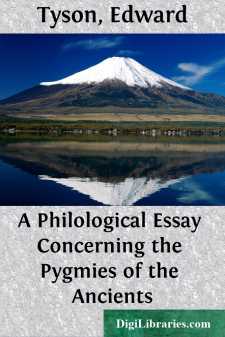Categories
- Antiques & Collectibles 13
- Architecture 36
- Art 48
- Bibles 22
- Biography & Autobiography 813
- Body, Mind & Spirit 142
- Business & Economics 28
- Children's Books 17
- Children's Fiction 14
- Computers 4
- Cooking 94
- Crafts & Hobbies 4
- Drama 346
- Education 46
- Family & Relationships 57
- Fiction 11829
- Games 19
- Gardening 17
- Health & Fitness 34
- History 1377
- House & Home 1
- Humor 147
- Juvenile Fiction 1873
- Juvenile Nonfiction 202
- Language Arts & Disciplines 88
- Law 16
- Literary Collections 686
- Literary Criticism 179
- Mathematics 13
- Medical 41
- Music 40
- Nature 179
- Non-Classifiable 1768
- Performing Arts 7
- Periodicals 1453
- Philosophy 64
- Photography 2
- Poetry 896
- Political Science 203
- Psychology 42
- Reference 154
- Religion 513
- Science 126
- Self-Help 84
- Social Science 81
- Sports & Recreation 34
- Study Aids 3
- Technology & Engineering 59
- Transportation 23
- Travel 463
- True Crime 29
A Philological Essay Concerning the Pygmies of the Ancients
by: Edward Tyson
Description:
Excerpt
I.
Edward Tyson, the author of the Essay with which this book is concerned, was, on the authority of Monk's Roll of the Royal College of Physicians, born, according to some accounts, at Bristol, according to others, at Clevedon, co. Somerset, but was descended from a family which had long settled in Cumberland. He was educated at Magdalene Hall, Oxford, as a member of which he proceeded Bachelor of Arts on the 8th of February 1670, and Master of Arts on the 4th of November 1673. His degree of Doctor of Medicine he took at Cambridge in 1678 as a member of Corpus Christi College. Dr. Tyson was admitted a candidate of the College of Physicians on the 30th of September 1680, and a Fellow in April 1683. He was Censor of the College in 1694, and held the appointments of Physician to the Hospitals of Bridewell and Bethlem, and of Anatomical Reader at Surgeons' Hall. He was a Fellow of the Royal Society, and contributed several papers to the "Philosophical Transactions." Besides a number of anatomical works, he published in 1699 "A Philosophical Essay concerning the Rhymes of the Ancients," and in the same year the work by which his name is still known, in which the Philological Essay which is here reprinted finds a place. Tyson died on the 1st of August 1708, in the fifty-eighth year of his age, and is buried at St. Dionis Backchurch. He was the original of the Carus not very flatteringly described in Garth's "Dispensary."
The title-page of the work above alluded to runs as follows:—
Orang-Outang, sive Homo Sylvestris:
OR, THE ANATOMY OF A PYGMIE
Compared with that of a Monkey, an Ape, and a Man.
To which is added, A PHILOLOGICAL ESSAY Concerning the Pygmies, the Cynocephali, the Satyrs, and Sphinges of the ANCIENTS.
Wherein it will appear that they are all either APES or MONKEYS, and not MEN, as formerly pretended.
By EDWARD TYSON M.D.
Fellow of the Colledge of Physicians, and the Royal Society: Physician to the Hospital of Bethlem, and Reader of Anatomy at Chirurgeons-Hall.
LONDON:
Printed for Thomas Bennet at the Half-Moon in St. Paul's Church-yard; and Daniel Brown at the Black Swan and Bible without Temple-Bar and are to be had of Mr. Hunt at the Repository in Gresham-Colledge. M DC XCIX.
It bears the authority of the Royal Society:—
17° Die Maij, 1699.
Imprimatur Liber cui Titulus, Orang-Outang, sive Homo Sylvestris, &c.
Authore Edvardo Tyson, M.D. R.S.S.
JOHN HOSKINS, V.P.R.S.
The Pygmy described in this work was, as a matter of fact, a chimpanzee, and its skeleton is at this present moment in the Natural History Museum at South Kensington. Tyson's granddaughter married a Dr. Allardyce, who was a physician of good standing in Cheltenham. The "Pygmie" formed a somewhat remarkable item of her dowry. Her husband presented it to the Cheltenham Museum, where it was fortunately carefully preserved until, quite recently, it was transferred to its present position.
At the conclusion of the purely scientific part of the work the author added four Philological Essays, as will have appeared from his title-page....


